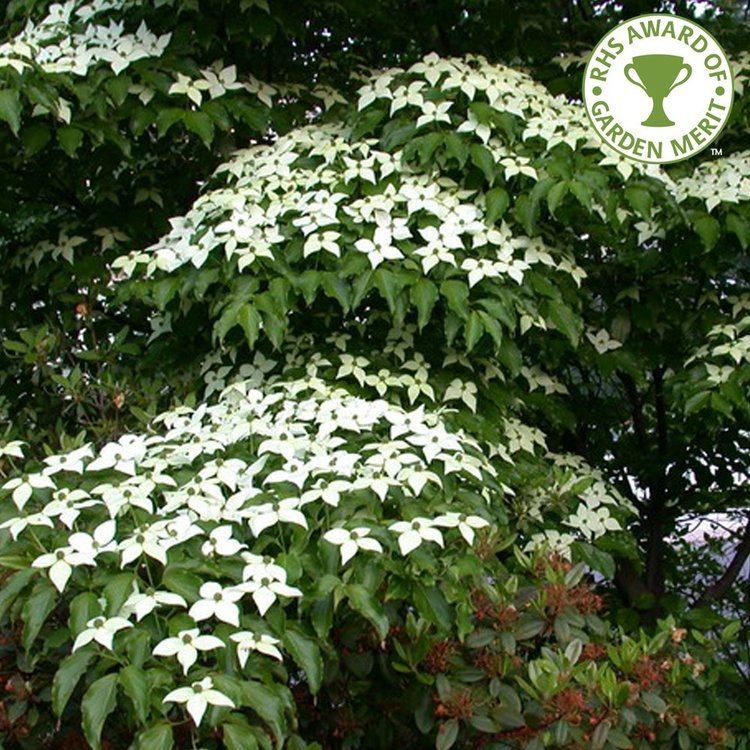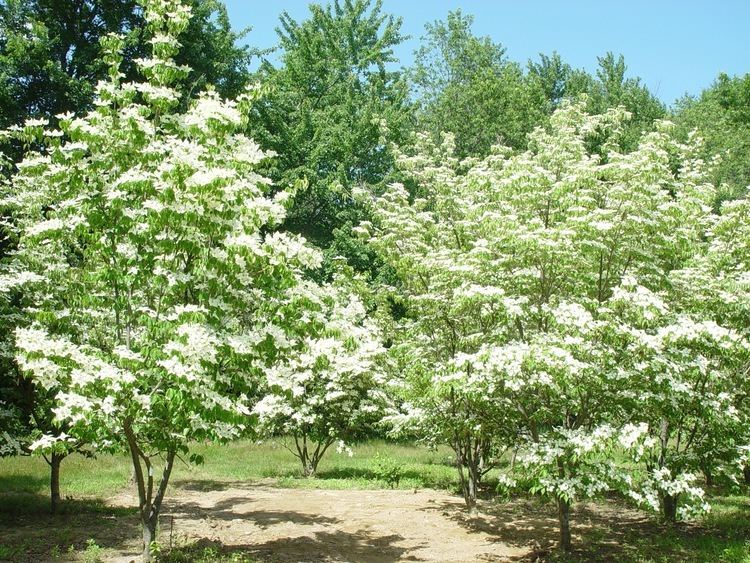Subgenus Syncarpea Higher classification Dogwood | Rank Species | |
 | ||
Similar Dogwood, Flowering dogwood, Cornus controversa, Cornaceae, Japanese snowbell | ||
Cornus kousa miss satomi pink flowering dogwood
Cornus kousa, also called Korean dogwood, is a small deciduous tree 8–12 m (26–39 ft) tall, in the family Cornaceae. Common names include Japanese dogwood, kousa, and kousa dogwood. Synonyms are Benthamia kousa and Cynoxylon kousa. It is a native plant to East Asia including Korea, China and Japan. Widely cultivated as an ornamental, it is naturalized in New York State.
Contents
- Cornus kousa miss satomi pink flowering dogwood
- Kousa dogwood cornus kousa small flowering tree white flowers
- Description
- Varieties hybridsm and cultivars
- References

Kousa dogwood cornus kousa small flowering tree white flowers
Description

Like other Cornus, it has opposite, simple leaves, 4–10 cm long. The tree is extremely showy when in bloom, but what appear to be four, white petals are actually four spreading bracts below the cluster of inconspicuous yellow-green flowers. The blossoms appear in late spring, weeks after the tree leafs out.

It can be distinguished from the flowering dogwood (Cornus florida) of eastern North America by its more upright habit, flowering about a month later, and by the pointed rather than rounded flower bracts.

The fruit is a globose pink to red compound berry 2–3 cm in diameter, though these berries tend to grow larger towards the end of the season and some berry clusters that do not fall from the tree exceed 4 cm. It is edible, a sweet and delicious addition to the tree's ornamental value. The fruit is sometimes used for making wine.
It is resistant to the dogwood anthracnose disease, caused by the fungus Discula destructiva, unlike C. florida, which is very susceptible and commonly killed by it; for this reason, C. kousa is being widely planted as an ornamental tree in areas affected by the disease.
Fall foliage is a showy red color.
Varieties, hybridsm and cultivars
A number of hybrids between C. kousa and C. florida have been selected for their disease resistance and good flower appearance. Varieties include:
